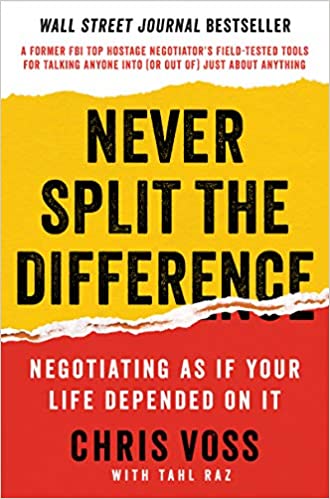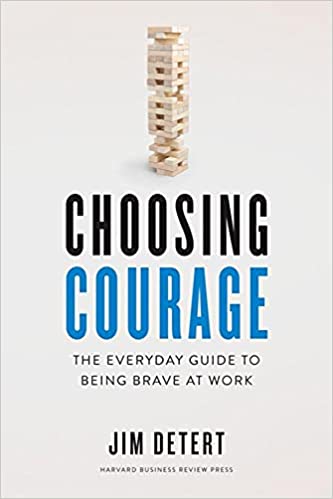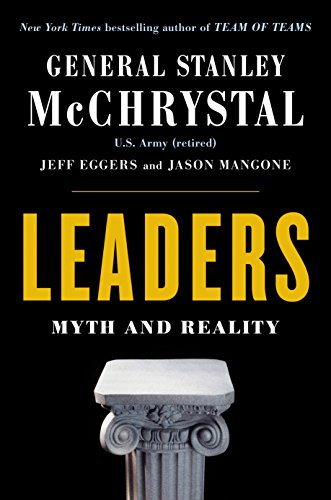This episode is about the importance of finding the underlying causes for today’s common leadership challenges. It’s about not making the mistake of treating symptoms versus the underlying root cause. Learn how curiosity can inspire and provide insight. Often, the objective, analytic thinking that propelled you to the C-suite now needs to be paired with intuition and conceptualization for you to see the trends and patterns of issues. If you’re not a CEO, you can learn to think like one and increase your value to the organization. Listen to the end for the listener challenge!
Key Takeaways
[1:26] This week’s topic: focusing on the problem. Jim recently talked to a client who had set a goal. The goal was a solution to a problem, for example, buying a new system that would run the company and fix everything. While talking about the solution, the client was not talking enough about the problem. Solving the problem is the goal. Does this solution, or another solution, solve the problem?
[3:01] Jim thinks this is important because as consultants and coaches, Jan and Jim’s job is to dig into the problem, not just provide a solution. Jim worked with Bard Press on a book, and his contact, Todd, kept reminding him to focus on the problem. Jan and Jim recently interviewed Dre Baldwin who also said to focus on the problem! So this is a timely topic.
[3:47] Jan quotes guest Brian Caulfield saying, “Sell the problem, not the solution,” as the most quotable quote of the podcast. When people look at problems, they often neglect to look for the root cause. They come up with an “either this or that” solution; the best solution might be “this and that.” Jan refers to Peter Senge and the Fifth Discipline, using systems thinking to figure out the problem.
[4:45] The Pairin Behavioral Surveys that Jan has run find that 95% of the time, people score very high in Objective-Analytical and very low in Intuitive-Conceptual. Intuitive-Conceptual is about understanding the root causes of things and being open-minded.
[6:18] When Jim does sales training, he goes back to Sandler for the Dummy Curve. When you get a new salesperson, who doesn’t know a lot about the product, but they’re successful right away, for two reasons: They don’t know enough about the product to talk about the product, so they ask a lot of questions centered around the problem. That creates an affinity with the customer.
[7:48] Does the product solve the problem? No one cares how the product works if it solves the problem. Focus on the problem. When you don’t know how the product works, you have no choice but to focus on the problem. You ask questions that define the problem better. If the sales force knows too much, they want to show their mastery and talk more. That ruins the sale.
[8:25] The Dummy Curve is that you come in, you have success, and then you lose it the more you learn. Jim coaches leaders not to train new salespeople too much on the product. Talk to them about the problem that their product solves. Coach them on the business problems people have that invite your product and solution. Have them be more curious about those.
[9:25] Jan sees this episode as emphasizing the power of the question. Jan has been coaching about coaching and asking difficult questions. A better approach to a difficult conversation is “Hey, Jim, how do you think that meeting went?” rather than “Hey, Jim, you know what you did in that meeting?” The higher up we go, we need to be better about the questions.
[10:16] Jan coached someone about presenting to a high level in the organization. The presenter was rehearsing what to say to influence a decision. Jan asked, “What objections and resistances do you expect?” They discussed how answers to objections could be questions and they considered sample questions. Questions don’t have power unless you’re curious about the problem and the root cause.
[11:40] Talk about task conflict and not personal conflict. Depersonalize the difficult conversation. Focus on the issues. What is the problem that we need to solve together? Jan brings up an example of heating service people who got to the root cause of his problem. If you understand the root cause, you can at least put a bandage on it. Without knowing the root cause, that’s about all you can do.
[14:47] Some reasons people are content with a bandage instead of getting to the root of the problem are that they don’t have time, they don’t care, competing priorities, or having so many problems crossing their desks that they don’t notice how big one specific problem is. They don’t have curiosity, or they have a bias toward quick action. Jan compares it to being seen by a dismissive doctor.
[18:01] Jim refers to his upcoming book. The first part of the book is about diagnosing business symptoms. We sometimes mistake the symptom for the problem. Jim shares a story from the book about his father, having abdominal pain in his 60s. The doctor refused to look at the pain as the problem but recognized it as a symptom of an abdominal aortic aneurysm. She saved his life with surgery.
[22:08] Jan explains the levers of change: people, incentives, structure, and process. Leaders are rewarded for being problem solvers so the incentive is to solve problems fast. At a certain point, when they start taking on high levels of responsibility, the job shifts from doing to thinking. Jan tells people to think like a designer. Look at each lever. It’s not always an issue for coaching to solve.
[24:25] If you’re not the CEO but you want to be a valuable employee, think like a CEO. Help the CEO see what they might not be seeing. CEOs need to look at the broad performance of the organization and see the patterns, then dig and understand what’s behind those patterns. Past guest, Jim Gilmore, author of Look, wrote about seeing through binoculars, field glass, and microscope. CEOs need a field glass.
[26:35] People are worried about budgeting for the next year and they’re all worried about low sales numbers. They’re looking for things to cut from the budget instead of asking what it would take to increase their sales for the next year. Jan always asks where the assumptions behind the budget are coming from.
[28:07] Jan notes that scaling means doing more with less by getting more productive and becoming more efficient. Jim asserts that the companies that don’t panic during downtimes but invest wisely can grow at great paces compared to those who batten the hatches and shrink. Always seek to understand the problem before solving it.
[29:30] Look at the number of companies that were created and grew prodigiously in the Great Depression. The Great Depression was awful. The tech giants of today did not panic during the dot.com bust. They doubled down and grew. There are opportunities all the time but if you’re fixated on a solution, you will not see the opportunities that surround you.
[30:39] Jim offers an audience challenge: Pay close attention over the week. Listen twice as much as you talk and listen for where you hear either yourself or other people so enamored with a solution that they are missing the real point of understanding the problem. If you recognize that moment, redirect the conversation; ask a question to understand. You will find a more productive outcome on the other side.
[32:03] Jan reflects that Jim’s audience challenge will take temperance, self-discipline, and self-awareness to understand your effect on other people. Jim and Jan invite you to get in touch with your feedback on these Jim and Jan episodes and suggestions for what subjects you would like Jim and Jan to talk about next.
[33:18] Closing quote: Remember, “It isn’t that they can’t see the solution. It is that they can’t see the problem.” — Gilbert K. Chesterton
Quotable Quotes
“When we spend too much time talking about the solution, the trap we fall into is that we limit the possibilities for what the real solution could be because we’re not spending enough time talking about the problem.” — Jim Share on X “What course of action is going to be the best path toward the future?” — Jim Share on X “It goes back to the Fifth Discipline — what Peter Senge wrote about systems thinking.” — Jan Share on X “I say to leaders, ‘What got you here is your ability to see patterns … and make quick decisions. … But those quick decisions are based on paradigms and biases. As a high-level leader, you need to suspend that, have … an open mind,… Share on X “Talk to [new salespeople] about the problem that your product solves. Coach them on the business problems people have with regard to your product and solution.” Share on X “We need to talk about process and task conflict and not personal conflict.” — Jim Share on X “Too many times, we look at a symptom and we don’t realize — we think it’s the problem but it’s just the symptom and … the real business problems are masked by those symptoms.” — Jim Share on X “Everybody’s got blinders on.” — Peter Drucker, quoted by Jan Share on X “If you’re not the CEO but you want to be a really valuable employee, think like a CEO.” — Jan Share on X “We all know that scaling means you’re doing more with less. Not because we’re working people harder but because we’re getting smarter, we’re getting more productive, and we’re getting more efficient. Not because we’re driving… Share on X “Look at the number of companies that were created and grew prodigiously in the Great Depression. … You could say times were different, but they’re not.” — Jim Share on X
These are the books mentioned in Jim and Jan’s podcasts.
Resources Mentioned
- Sponsored by: Darley.com
- Rafti Advisors. LLC
- Self-Reliant Leadership. LLC
- Interact with Jan and Jim on LinkedIn, Facebook, Twitter, and Instagram
- Bard Press
- Brian Caulfield
- Systems Thinking
- PAIRIN Survey
- Michael Simpson
- Sandler Training
- Peter Drucker
- Harry Chapin




















































Recent Comments